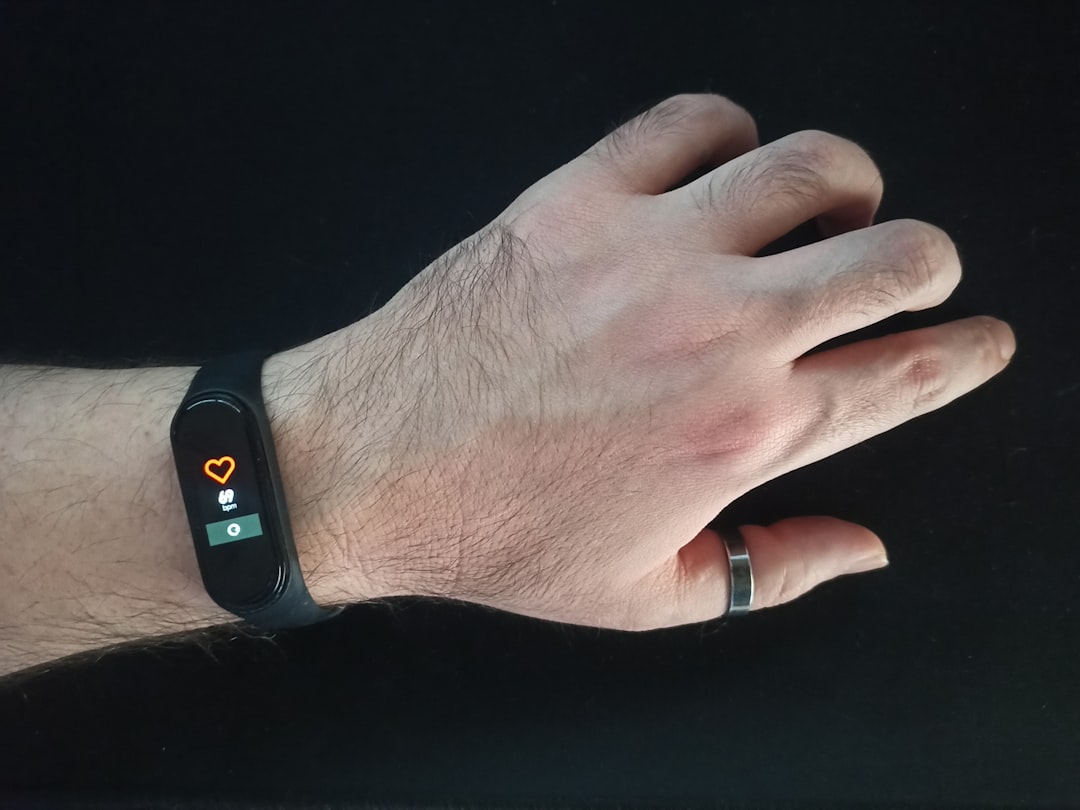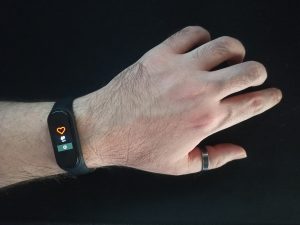Unlock Fitness Potential with Meta’s Neural Wristband
Unlock your fitness potential with Meta’s Neural Wristband. Discover how muscle signals control devices. Explore the future of fitness tech!
Introduction to Meta’s Neural Interface Wristband
Revolutionizing Human-Computer Interaction
Meta’s Neural Interface Wristband represents a significant leap forward in the realm of human-computer interaction. By leveraging advanced neural interface technology, this wristband allows users to control digital devices through subtle movements and gestures.
The device reads electrical signals sent by the brain to the muscles, translating these signals into commands for computers and other digital interfaces.
How It Works
The wristband is equipped with a series of sensors that detect the electrical activity generated by muscle movements. These sensors capture the neural signals that travel from the brain to the hand, enabling the device to interpret intended actions.
The wristband’s algorithms then process these signals in real-time, allowing for seamless interaction with computers and other connected devices.
This technology is designed to be highly intuitive, learning from the user’s muscle signals to improve accuracy and responsiveness over time. As a result, users can perform complex tasks with simple gestures, enhancing both efficiency and accessibility in digital environments.
Applications and Potential
Meta’s Neural Interface Wristband opens up a wide range of applications across various industries.
In gaming, it offers a more immersive experience by allowing players to control their avatars with natural hand movements. In professional settings, it can streamline workflows by enabling hands-free operation of computers and other devices.
Moreover, the wristband holds significant potential for individuals with disabilities, providing new ways to interact with technology that do not rely on traditional input methods.
This innovation could lead to greater inclusivity, empowering users to engage with digital content more effectively.
Privacy and Security Considerations
As with any technology that interfaces directly with the human body, privacy and security are paramount concerns. Meta has implemented robust measures to protect user data, ensuring that the information captured by the wristband remains secure and confidential.
The company is committed to maintaining transparency about how data is collected and used, fostering trust among its users.
By prioritizing these considerations, Meta aims to create a safe and secure environment for users to explore the full capabilities of their Neural Interface Wristband.
How Muscle Signals Control Computers
The Concept of Neural Interfaces
Neural interfaces are innovative technologies that enable direct communication between the human nervous system and external devices. These systems interpret neural signals generated by the brain or muscles to perform specific tasks.
Meta’s neural interface wristband exemplifies this technology by translating muscle signals into computer commands, allowing users to interact with digital devices seamlessly.
Understanding Muscle Signals
Muscle signals, or electromyographic (EMG) signals, are electrical activities produced by muscle fibers when they contract. These signals are rich with information about the intended movements of the user.
By capturing and analyzing these signals, neural interfaces can predict and execute the user’s desired actions, such as moving a cursor or typing on a virtual keyboard.
How Meta’s Wristband Works
Meta’s neural interface wristband is equipped with sensors that detect EMG signals from the wrist and forearm muscles. When a user thinks about performing an action, such as clicking a mouse or scrolling through a page, the wristband captures the subtle muscle activities associated with these thoughts.
The device then processes these signals in real-time, translating them into specific commands that control the computer.
Applications and Implications
The ability to control computers using muscle signals has vast potential applications. For individuals with disabilities, this technology offers a new way to interact with digital environments, enhancing accessibility and independence.
In gaming, it provides a more immersive experience by allowing players to control their avatars with mere thoughts.
Moreover, the implications of this technology extend to fields such as virtual reality and augmented reality, where seamless interaction is crucial. By reducing the need for physical controllers, neural interfaces can create more intuitive and natural user experiences.
Challenges and Future Prospects
Despite its promising potential, the development of neural interface technology faces several challenges.
Ensuring the accuracy and reliability of signal interpretation is crucial, as is addressing privacy concerns related to the collection and processing of neural data. Additionally, making the technology affordable and accessible to a broader audience remains a significant hurdle.
Looking ahead, continued research and development in this field could lead to even more sophisticated interfaces, enabling a deeper integration of human and machine capabilities.
As the technology matures, it holds the promise of transforming how we interact with computers and other digital devices.
Benefits of Using Neural Interface Technology
Enhanced Human-Computer Interaction
Meta’s neural interface wristband offers a groundbreaking way to interact with computers by translating muscle signals into digital commands. This technology allows users to control devices with subtle hand movements, providing a more intuitive and seamless interaction.
By eliminating the need for traditional input devices like keyboards and mice, users can experience a more natural and efficient way to engage with technology.
Increased Accessibility
One of the most significant benefits of neural interface technology is its potential to increase accessibility for individuals with physical disabilities. By enabling control through muscle signals, the wristband can empower those who may find traditional input devices challenging to use.
This technology can open up new opportunities for individuals to interact with digital environments, enhancing their ability to communicate and participate in various activities.
Improved Productivity
The ability to control computers through muscle signals can lead to significant productivity gains. Users can perform tasks more quickly and with greater precision, as the technology reduces the time and effort required to execute commands.
This efficiency can be particularly beneficial in professional settings where rapid and accurate input is essential, such as in design, engineering, and data analysis.
Personalized User Experience
Neural interface technology can offer a highly personalized user experience by adapting to individual muscle signals and preferences. As the system learns and evolves with the user, it can provide tailored interactions that enhance comfort and usability.
This personalization can lead to a more satisfying and engaging experience, as the technology aligns more closely with the user’s unique needs and habits.
Potential for Innovation
As neural interface technology continues to develop, it holds the potential to drive innovation across various industries. By enabling new forms of interaction and control, this technology can inspire the creation of novel applications and services.
From gaming and virtual reality to healthcare and beyond, the possibilities for innovation are vast, promising to transform how we interact with technology and each other.
Future Implications and Potential Applications
Revolutionizing Human-Computer Interaction
The introduction of Meta’s neural interface wristband represents a significant leap forward in human-computer interaction. By interpreting muscle signals, this technology allows users to control computers and digital devices with unprecedented precision and ease.
This could lead to more intuitive user experiences, where complex tasks are performed with simple gestures, reducing the learning curve associated with new technologies.
Enhancements in Accessibility
For individuals with disabilities, this technology holds the promise of enhanced accessibility. By bypassing traditional input devices like keyboards and mice, users with limited mobility can interact with digital environments more effectively.
This could pave the way for more inclusive technology solutions, enabling greater independence and participation in the digital world.
Applications in Virtual and Augmented Reality
In the realms of virtual and augmented reality, the neural interface wristband could provide more immersive experiences. Users could manipulate virtual objects or navigate digital spaces using natural hand movements, enhancing the realism and interactivity of VR and AR applications.
This could be particularly beneficial in gaming, training simulations, and remote collaboration tools.
Advancements in Wearable Technology
The integration of neural interfaces into wearable technology could lead to the development of more sophisticated and multifunctional devices. Wristbands that read muscle signals could be combined with other sensors to monitor health metrics, providing comprehensive insights into a user’s physical state.
This could revolutionize personal health monitoring and preventative healthcare.
Implications for Data Privacy and Security
As with any technology that collects personal data, the neural interface wristband raises important questions about data privacy and security. Ensuring that the muscle signal data is protected from unauthorized access will be crucial.
Developing robust security protocols and transparent data handling practices will be essential to gain user trust and ensure widespread adoption.
Potential for Industry and Enterprise Use
In industrial and enterprise settings, the neural interface wristband could streamline operations and improve efficiency. Workers could control machinery or access information systems with simple gestures, reducing the need for physical interfaces and potentially increasing productivity.
This could be particularly advantageous in environments where hands-free operation is beneficial.
FAQ
Q1: How can Meta’s Neural Interface Wristband assist beginners in fitness training?
A1: Meta’s Neural Interface Wristband can be a game-changer for beginners by offering precise control over fitness applications and devices through muscle signals. This technology allows users to interact with virtual trainers, track their form, and receive real-time feedback without needing to touch a screen or device. For beginners who might be concerned about soreness or how often to train, the wristband can help monitor muscle activity and suggest optimal rest periods, ensuring that workouts are both effective and safe.
Q2: How does the wristband help advanced users with recovery timing and overcoming plateaus?
A2: Advanced users can benefit from the wristband’s ability to provide detailed insights into muscle performance and recovery needs. By analyzing muscle signals, the wristband can offer personalized recommendations on when to rest and when to push harder, optimizing recovery timing. For those facing plateaus, the wristband can suggest variations in exercises or intensity based on muscle response, helping to break through stagnation by adjusting training strategies in real-time.
Q3: Are there any concerns about using the wristband for fitness training?
A3: While the wristband offers numerous advantages, users might have concerns about its accuracy and the potential for over-reliance on technology. Beginners may worry about interpreting data correctly, while advanced users might question if the wristband can fully replace traditional training methods. It’s important to use the wristband as a supplementary tool, combining its insights with personal experience and professional guidance to achieve the best results. Additionally, ensuring the wristband is correctly calibrated and regularly updated can help mitigate these concerns.
Takeaway
“Ready to transform your fitness journey? Take the first step today! Start a new workout challenge, download your FREE training plan, and join our vibrant fitness community of like-minded individuals who will support and motivate you every step of the way. Let’s crush those goals together! Are you in?” This move is widely interpreted as a strategic response to recent challenges.











Comments